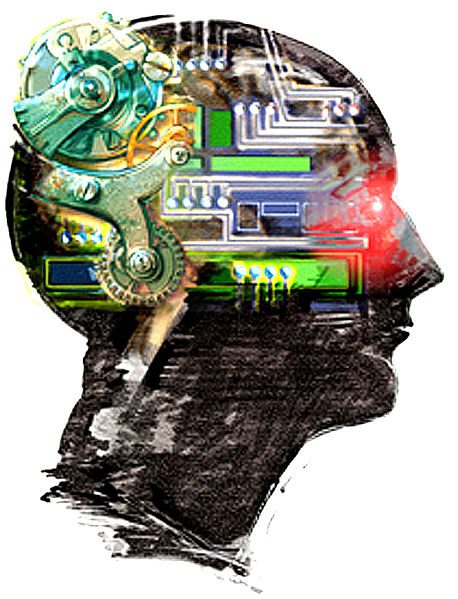
R&D (research and development) recruiting is exploding because of so many new artificial intelligence (AI) trends and applications. This has resulted in exponentially more staffing needs for engineers, scientists, information technology (IT), technical and manufacturing technology than job candidates to fill those openings!
Four AI trends Driving The R&D Recruitment Escalation
Artificial intelligence was already impacting most industries before Covid-19 struck, especially within the AI sub field of machine learning (ML). As a result, R&D recruiting has overwhelmed staffing departments.
However, the pandemic has increased the research and development appetite with needs for self-teaching algorithms and smart machines to the fight the global outbreak. As a result, four major trends will be fueling AI growth in the future.
Smarter Big Data, Data Analytics and Insights
The pandemic has created an urgent need to quickly analyze and interpret data on the spread of viruses around the world. Governments, global health bodies, academic research centers and industry have all come together to develop new ways for that information can be collected, aggregated and scrutinized. For example, viewing the results of the latest infection or death rates have become a regular occurrence on the nightly news.
Technological advancement is the main reason that this pandemic hasn’t killed as many as the 50 million taken by the 1918 Spanish Flu. From breakthroughs in medical technology and standards of care, to advancements in communication technology, outbreaks have been spotted more quickly and lockdowns imposed.
As a result, AI has become one of the most important technological developments enabling us to more effectively deal with pandemics.
The growth in the amount of scientific and medical literature alone has been enormous, with more than 28,000 papers related to Covid-19 published by April alone. A dedicated search engine powered by natural language processing (NLP) algorithms has already been made available, so anyone can get AI assistance when investigating this massive dataset.
Work is also ongoing to develop AI solutions to help deal with the huge backlog of other medical issues, such as cancer, where treatment has been affected as resources are diverted to fight Covid-19. Over the next year, we are likely to see the accelerated adoption of AI across many other areas of healthcare, not only related to tackling viruses.
By developing our ability to apply machine learning problem-solving to these massive, real-time global datasets, we will spot outbreaks more easily, track contact between infected people, enable more accurate diagnoses, and, by predicting ways that a virus might evolve in the future, develop more effective and lasting vaccinations.
Smarter big data, data analytics and insights into this data as a result of AI are all reasons research and development recruiting is soaring within the artificial intelligence field.
Automated Detection and Prevention
There is already the use of drones in several jurisdictions to monitor whether social distancing guidelines are being followed. More advanced applications are coming, such as drones with the capability of detecting COVID symptoms including high temperatures in individuals within a crowd.
These systems use computer vision technology to analyze data captured by cameras on the drones and inform authorities or local administrators of statistics and probabilities around the spread of the virus.
Another related growth area will be the use of facial recognition technology, also powered by computer vision algorithms. Somewhat more controversial as it focuses on the identification of individuals, rather than patterns among groups of people, facial recognition has been used by police to detect lockdown and quarantine-avoiders, as well as to track the movements of individuals displaying symptoms within a crowd.
These AI-driven surveillance techniques will also drive increased R&D recruiting. The key is as artificial intelligence applications grow, so too do the needs for key research and development talent to develop those applications.
Business on the Rebound | Predicting Behavioral Transformation
Covid-19 has hugely impacted the ways we live, work and socialize. AI tools and platforms are already in place to help businesses understand the ways their customers are adapting to this new reality.
Organizations that were previously lagging in their commitment to digital channels for commerce and relationship nurturing have come to understand the urgency of the situation and are quickly coming to grips with concepts such as behavioral analytics and personalization.
Tools providing organizations with self-service access to this technology will become increasingly prevalent throughout 2021, as small and medium-sized enterprises are seeking to establish their competitive edge. The expanded use of these artificial intelligence tools will also be a big driver of more research and development recruiting.
Shutting Down the Next Pandemic Before It Starts
Most AI algorithms are geared towards prediction and the holy grail of AI-assisted epidemiology in order to build systems that can accurately predict when and where future outbreaks will take place. In fact, some of the earliest alerts about the current outbreak were generated by AI research.
For example, Toronto-based BlueDot’s tool was already scanning 100,000 governmental and media data sources daily when it issued an alert about a potential outbreak in Wuhan, China, on December 31, 2019.
We can expect AI research to yield further breakthroughs over the coming 18 months that will increase our ability to spot and react to the danger of viral outbreaks. For this to happen, more and better trained research and development scientists will be needed. This is yet another driver of increased R&D recruiting within the artificial intelligence field.
Two Steps To Improving Artificial Intelligence R&D Recruiting
Because of the surge in AI research and development recruiting, staffing departments will need to take a proactive approach to developing effective R&D candidate pipelines. The first step in this process is reviewing your company’s branding to ensure that you have positioned yourselves as a viable place for research and development talent to work.
The second step is to identify viable areas to source candidates for that pipeline. This can include a) identifying competitors b) uncovering viable research and development candidates within those competitors c) contributing to research and development blogs and magazines to get noticed by the R&D candidates you seek and d) connecting to LinkedIn candidates who may become future candidates.
Then even if a valued research and development recruitment candidate turns your job offer down, you will have many ready R&D replacements.
Call me today at 312-944-4000 to discuss how we can assist with your R&D, engineering, scientific, technical, IT and manufacturing recruitment efforts in the highly competitive fields of Artificial Intelligence, Robotics, Internet of Things (IoT) as well as Virtual (and Augmented) Reality. Or click here for my full contact information.



